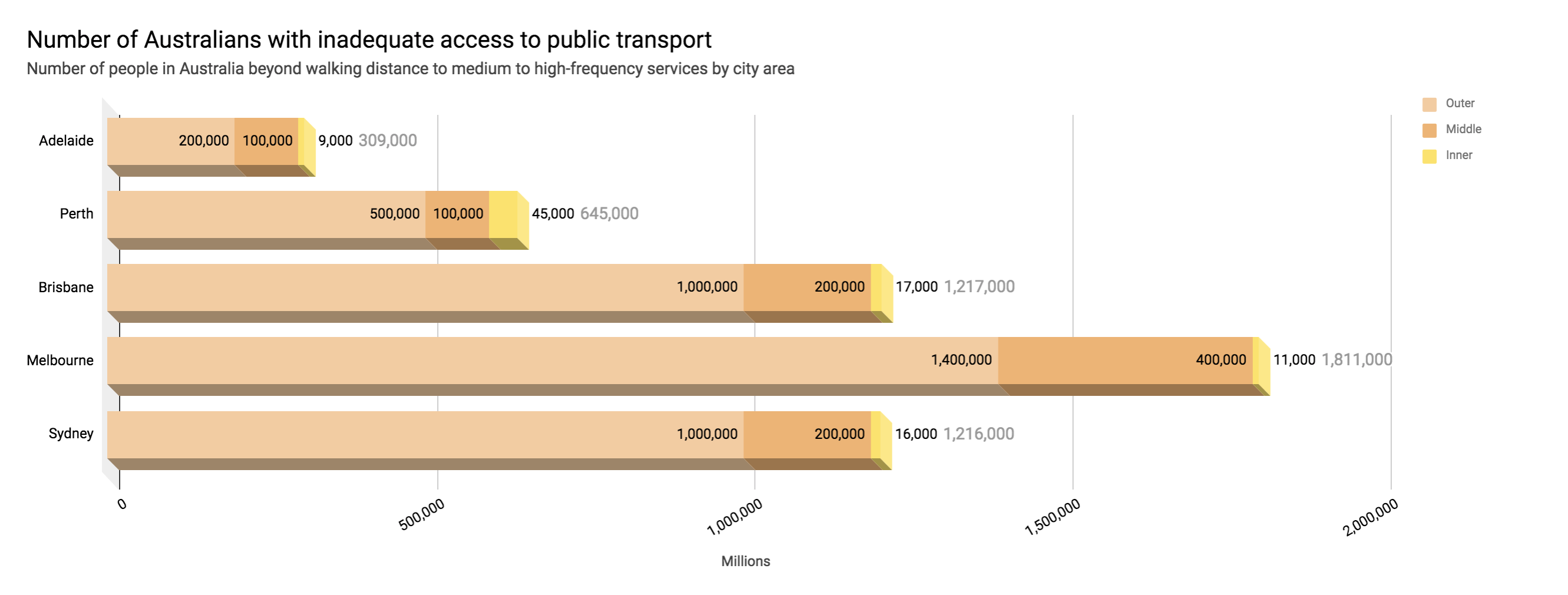While Australia is rapidly urbanising, we are still unflinchingly suburban, with nearly 50 per cent of us living in the outer suburbs of our five largest cities: Sydney, Melbourne, Brisbane, Perth and Adelaide.
Over the next 30 years, Australia will grow by more than 11 million people, and much of this growth will be in the outer reaches of our cities.
A new report by Infrastructure Australia has warned that the outer urban areas of our cities are being left behind. More than four million suburban city-dwellers do not have frequent public transport services within walking distance of their home.
Inadequate access to public transport is driving disadvantage, limiting access to employment, education and other social infrastructure, which can have a tangible impact on quality of life.
The report defines walking distance as 800 metres to a suburban rail service and 400 metres for other services. A medium to high-frequency service is defined as four or more services during weekday morning peak times.
Residents in Melbourne’s outer suburbs have the worst access to public transport – with 1.4 million people, or 62 per cent, without access to frequent public transport services within walking distance.
More than 1 million people in Sydney and Brisbane also fall into this category, while half a million Perth residents and 200,000 Adelaide residents live with inadequate access to public transport.
Related: Victoria Unveils $50 Billion Suburban Rail Project

Inadequate access to public transport means that people in outer urban areas travel further and take more time to get to work.
About 45 per cent of these residents travel more than 20 km each day to work, compared to just 7 per cent of inner-city dwellers.
“Without access to reasonable public transport services, people living or working in our outer suburbs are more reliant on their cars,” Infrastructure Australia executive director of policy and research Peter Colacino said.
“Meaning they shoulder the burden of additional vehicle operating costs, leaving less money for other household expenses compared to commuters in inner suburbs.”
Colacino called on state governments to improve existing transport networks and consider new technology to service communities in the growing outer suburbs.
“In the past, it has been very costly to deliver public transport in lower density, outer suburban areas where houses and employment centres are typically spread over large distances.
“Traditional public transport models are most efficient and effective in areas of high demand, often requiring higher density.
“However, new technology and delivery models, such as on-demand buses, offer an immediate opportunity to confront these challenges by increasing the flexibility and reach of the network and therefore serving a more diverse range of destinations.”












